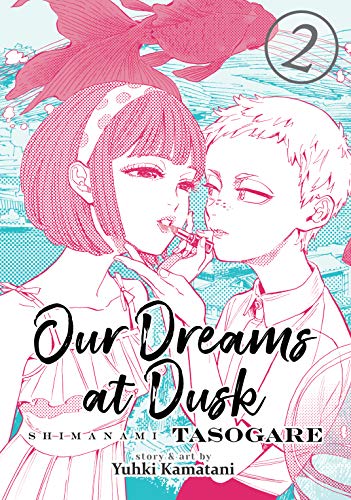By Yuhki Kamatani. Released in Japan by Shogakukan, serialization ongoing in the magazine Hibana. Released in North America by Seven Seas. Translated by Jocelyne Allen. Adapted by Ysabet MacFarlane.
It was always a possibility, of course. We’ve seen that sort of thing in countless other titles. The new character comes along to an already existing group and is able to magically help all of them with their problems. And indeed, we saw Tasuku last time introduced to the drop-in center, and the bulk of this second volume revolves around Misora, the kid from last time who was rude and dismissive of Tasuku, and is on the cusp of puberty and also having gender identity issues. It would make perfect sense to see Tasuku help drag Misora out of their shell and help them come to firm realizations. Indeed, we start to see something like that. But life is just not that simple, and Misora’s issues are deep-rooted and not easily solved. And so we end with more lashing out, and more slurs used to hurt, and more art as metaphor with Tasuku’s world literally collapsing around him.
Both people on the cover are Misora, who dresses as a girl at the drop-in center but would never do anything like that at home. Their relationship with Tasuku is extremely bitter and confrontational, and Misora takes delight at times in not only correcting Tasuku’s misconceptions but also hammering on Tasuku’s wounds. At the same time, of course, Misora is also guardedly opening up to Tasuku and feeling him out, ready to lash out in pain and fury at the slightest sign of pity or confusion. But at least Tasuku has defined himself, even if he can’t admit it to the man he loves. Misora is not sure at all what they are – a boy, a girl, or what have you. And they also know that puberty is soon going to make this much, much harder. Meanwhile, Tasuku’s story is hardly over, as he’s spotted at the drop-in center, and outed to his crush… who may already have an inkling about things anyway.
The plot of this volume is very good, but it’s the journey that’s even better. There are no wasted pages, and the frustration burns off the pages as Misora spews more and more slurs at Tasuku – there’s lots of them in this book, all meant to push Tasuku away and also other him to a degree. There’s also more terrific art – I’d mentioned the collapsing building metaphor earlier that serves as the climax, but there’s also little moments like Tasuku taking a wave that Tsubaki gives to him and consuming it at stars, or Misora shown in the water of a glass that Tasuku drops, about to shatter to the floor. Little moments like these help to move the reader along, and the character moments – which can be agonizing – help to slow things down. (I also want to know more about Tchaikovsky guy, and hope we see him next time.)
If you’d been on the fence about reading this series (and I can’t imagine too many who were), pick it up. It’s a painful journey, but also amazing to read.

